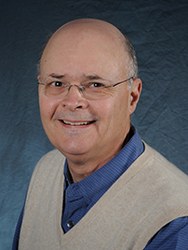非常抱歉,
你要访问的页面不存在,
非常抱歉,
你要访问的页面不存在,
非常抱歉,
你要访问的页面不存在,
验证码:

职称:Professor of Biochemistry and Biophysics
所属学校:University of North Carolina at Chapel Hill
所属院系:Department of Biochemistry and Biophysics
所属专业:Biochemistry
联系方式:919-966-6781
The Carter lab uses structural, bioinformatic, molecular genetic, and biophysical techniques to strengthen and deepen understanding of the mechanistic basis and historical origins of enzyme catalysis. One challenge we have undertaken is to study how chemical free energy released by nucleotiWeb_graph_vert_CARTER.jpgde triphosphate hydrolysis is converted into protein conformational changes. Combinatorial mutagenesis has shown that a broadly-conserved packing motif remote from the active site of Tryptophanyl-tRNA synthetases senses the domain configuration and communicates it to the active-site Mg2+ ion, converting it from an inactive to an active position, relative to the triphosphate. This allosteric mechanism accounts for the entire rate acceleration by Mg2+, thus tightly coupling catalysis of ATP utilization to domain motion. We are now studying how differential conformational energetic changes along the structural reaction profile actually mediate this coupling. Our second focus is the question of how polypeptide catalysts arose. Superposition of crystal structures for all 10 Class I aminoacyl-tRNA synthetases onto the structures of the B. stearothermophilus TrpRS allowed us to identify a 130 residue, disjoint subset containing the intact active site. When we constructed and expressed this "minimal catalytic domain" we found it had 65% of the transition state stabilization free energy of the intact dimeric enzyme, which is five times more massive. We call this and similar constructs "Urzymes" from Ur, the German prefix meaning "primitive, original" plus enzyme. Urzymes afford legitimate experimental models to study how the accumulation of modular genetic information enhanced the catalytic activity, specificity, and intramolecular communication in contemporary enzymes. Class I and Class II aminoacyl-tRNA synthetases are deeply puzzling because they exhibit no obvious sequence, structural or mechanistic homologies. We have developed strong evidence that the enzymatic activities of Urzymes derived from Class I TrpRS and Class II HisRS are authentic. The explicit location of the original catalytic fragments and their experimental activities together validate predictions derived from the hypothesis advanced by Rodin and Ohno that the two classes were originally encoded by opposite strands of the same gene. The possibility that the earliest genes actually coded for two different polypeptides would substantially change our ideas of how life began and have important implications for the understanding of the contemporary proteome. For this reason, we continue to seek additional evidence regarding the Rodin-Ohno hypothesis
The Carter lab uses structural, bioinformatic, molecular genetic, and biophysical techniques to strengthen and deepen understanding of the mechanistic basis and historical origins of enzyme catalysis. One challenge we have undertaken is to study how chemical free energy released by nucleotiWeb_graph_vert_CARTER.jpgde triphosphate hydrolysis is converted into protein conformational changes. Combinatorial mutagenesis has shown that a broadly-conserved packing motif remote from the active site of Tryptophanyl-tRNA synthetases senses the domain configuration and communicates it to the active-site Mg2+ ion, converting it from an inactive to an active position, relative to the triphosphate. This allosteric mechanism accounts for the entire rate acceleration by Mg2+, thus tightly coupling catalysis of ATP utilization to domain motion. We are now studying how differential conformational energetic changes along the structural reaction profile actually mediate this coupling. Our second focus is the question of how polypeptide catalysts arose. Superposition of crystal structures for all 10 Class I aminoacyl-tRNA synthetases onto the structures of the B. stearothermophilus TrpRS allowed us to identify a 130 residue, disjoint subset containing the intact active site. When we constructed and expressed this "minimal catalytic domain" we found it had 65% of the transition state stabilization free energy of the intact dimeric enzyme, which is five times more massive. We call this and similar constructs "Urzymes" from Ur, the German prefix meaning "primitive, original" plus enzyme. Urzymes afford legitimate experimental models to study how the accumulation of modular genetic information enhanced the catalytic activity, specificity, and intramolecular communication in contemporary enzymes. Class I and Class II aminoacyl-tRNA synthetases are deeply puzzling because they exhibit no obvious sequence, structural or mechanistic homologies. We have developed strong evidence that the enzymatic activities of Urzymes derived from Class I TrpRS and Class II HisRS are authentic. The explicit location of the original catalytic fragments and their experimental activities together validate predictions derived from the hypothesis advanced by Rodin and Ohno that the two classes were originally encoded by opposite strands of the same gene. The possibility that the earliest genes actually coded for two different polypeptides would substantially change our ideas of how life began and have important implications for the understanding of the contemporary proteome. For this reason, we continue to seek additional evidence regarding the Rodin-Ohno hypothesis